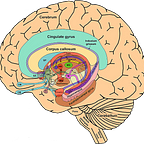Patient Reflection: LVAD
2.5 billion. That is the average number of beats a person’s heart will do before they die. Never once during a person’s lifetime does the heart stop beating. It keeps going on continuously, relentlessly. Because to cease is to die. While our brains may define who we are, our hearts are a fundamental barrier between life and death. Left ventricular assist device (LVAD) is a mechanical device that is used for patients experiencing end-stage heart failure. The device helps pump blood for patients mainly in end-stage heart failure. Implanting this device requires open-heart surgery and is an alternative route for cases necessitating heart transplants. As previously noted though, to stop is to die. Batteries and backup batteries are carried around everywhere and a patient can not live without them.
As an EMT, when I encountered my first LVAD patient, I had a perspective shift on how I viewed technology and society. The most obvious point that I realized was that this person would literally die without power. Without the constant presence of an infrastructure to take care of his electrical needs, he would not be able to function. I think this represents a fundamental difference between humans and other animals. In the wild or in our ancestral past, if someone or an animal got sick or had a medical condition, their chances of surviving were left up to chance without any sufficient interventions being available. However, in today’s society, we are able to keep a person alive in a situation they would frankly be dead in any other way. Although I can not fully elucidate the significance, there represents a huge potential understanding in the idea that an individual is mortally reliant on society. Yes, to some extent, we all rely on society. Water, electricity, food etc. However, if we dumped the vast majority of the population in the wild tomorrow, most of them would be able to garner the skills and the abilities to survive. This point is represented in the fact that floods and hurricanes always have victims based on medical conditions such as a need for oxygen.
As I continued to think about this LVAD patient, I kept thinking about dependency and capability. In some regards, is the fact the current advancement in technology and medicine actually a curse? What are the implications for a society that keeps those alive that would have died in the past? Yes, I am all for saving and respecting life. But, this is not about what society thinks but what the patient thinks and wants. What is a life that will be lived with the inability to go more than 10 miles outside of civilization? What is a life that will be lived confined to a bed? What will be a life that will be lived but not actually lived? Life is precious but there has to be a threshold for suffering? A threshold less importantly for economic efficiency and more importantly for personhood? There is a difference between a rash decision and a carefully considered analysis of a patient’s impact on their happiness, their family, and society.
To live without living. For me, living is about doing and being the things that make me, me. My identities. How would I feel if I could not be a doctor anymore? How would I feel if I couldn’t feed myself anymore? How would I feel if I couldn’t hug my sister anymore? I don’t know but I know there has to be a limit. There has to be a limit when a person stops being a person, not out of malice but out of understanding.
